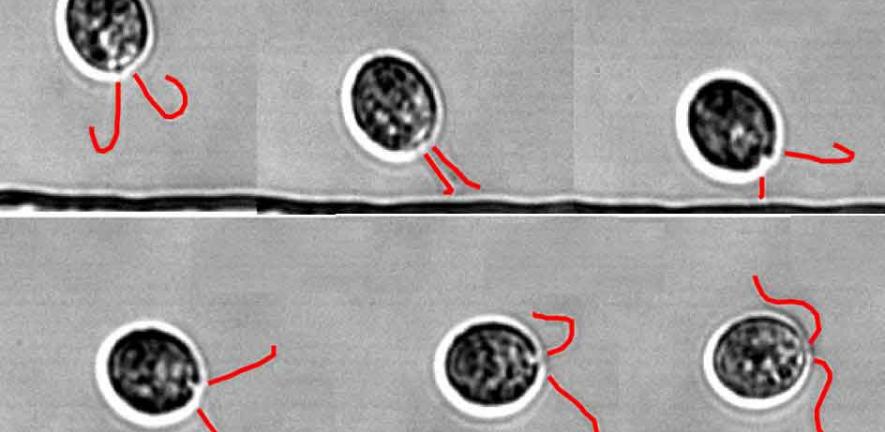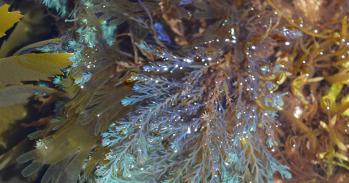
New research reveals what happens when swimming cells such as spermatozoa and algae hit a solid wall, and has implications for applications in diagnostics and biofuel production.
New research reveals what happens when swimming cells such as spermatozoa and algae hit a solid wall, and has implications for applications in diagnostics and biofuel production.
This is a very good example of how, as the baseball player and coach Yogi Berra once said, ‘you can observe a lot by watching’.
Raymond Goldstein
The results of a study published today (7 January) suggest that microbes ‘feel’ their way along a solid surface, much as a blindfolded person would move near a wall.
Using high-speed microscopic imaging, University of Cambridge researchers have found that sperm cells accumulate at surfaces and algae move away from them as a result of contact between the surface and the cells’ flagella or cilia – the hair-like appendages that propel cells through their fluid environment.
Interactions between swimming cells and surfaces feature prominently in a wide range of microbiological processes, most importantly in the formation of bacterial films and during the fertilisation of the human egg. Yet, surprisingly little has been known about the physical mechanisms that govern the accumulation of microbes at surfaces.
The new experiments, published in Proceedings of the National Academy of Sciences (USA), were performed by Professor Raymond Goldstein’s group in the Department of Applied Mathematics and Theoretical Physics, and demonstrate how the interactions of microbes with solid surfaces are considerably more complex than previously thought.
Dr Vasily Kantsler, who performed the experiments, said: “Current theories of microbial swimming near surfaces assumed that these processes are governed by hydrodynamic long-range forces – essentially, the movement of fluid around the cells – but our experimental observations show that they are in fact governed by the mechanical properties of the cells themselves.”
Sperm cells differ from algal cells in how they respond to a solid wall because they are ‘pusher swimmers’, with a single posterior cilium. By contrast, green algal cells such as Chlamydomonas are ‘puller swimmers’, achieving locomotion by the breaststroke-like beating of a pair of anterior flagellae.
The new research explains why sperm cells remain trapped for long periods near surfaces, a feature that may be of fundamental importance in understanding physical aspects of fertilisation.
Furthermore, the finding can be exploited in relation to Chlamydomonas – a model organism that has attracted considerable interest as a possible source of therapeutic proteins and renewable biofuel algae – by providing solid surfaces to rectify the random swimming motion of the cells. Kantsler, together with Dr Jörn Dunkel and Dr Marco Polin, has demonstrated how it is possible to design optimal microfluidic ratchets (a funnel device that guides cells in a fluid) to direct the swimming of the algae to create concentration gradients useful in biotechnological applications.
“This is a very good example of how, as the baseball player and coach Yogi Berra once said, ‘you can observe a lot by watching’,” said Goldstein, who is the Schlumberger Professor of Complex Physical Systems.
“By developing the experimental means to visualise these high-speed events close to surfaces, it became immediately clear that the reorientation of the cells was determined completely by the geometry of their flagella.
“The Chlamydomonas cells turn along the surface much as a blindfolded person would move near a wall, feeling it with their closest hand. This is nothing like the hydrodynamic picture that has prevailed to this point. Since many of the properties of cilia are conserved across eukaryotic species, cilia-mediated surface interactions are likely to play a similarly important role for a wide range of natural microswimmers, thus promising new diagnostic tools and microfluidic sorting devices for sperm and other swimming cells.”
This research was supported by an Advanced Investigator Grant from the European Research Council and by the Engineering and Physical Sciences Research Council.
This work is licensed under a Creative Commons Licence. If you use this content on your site please link back to this page.





